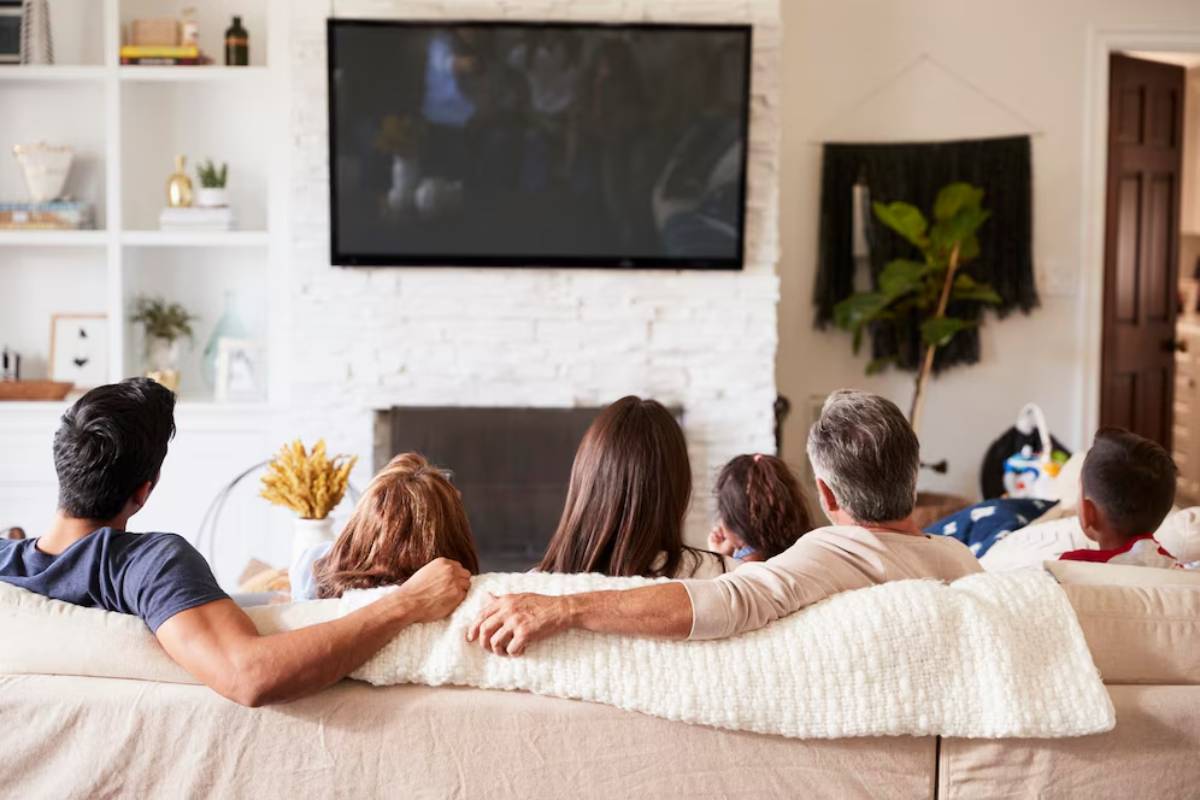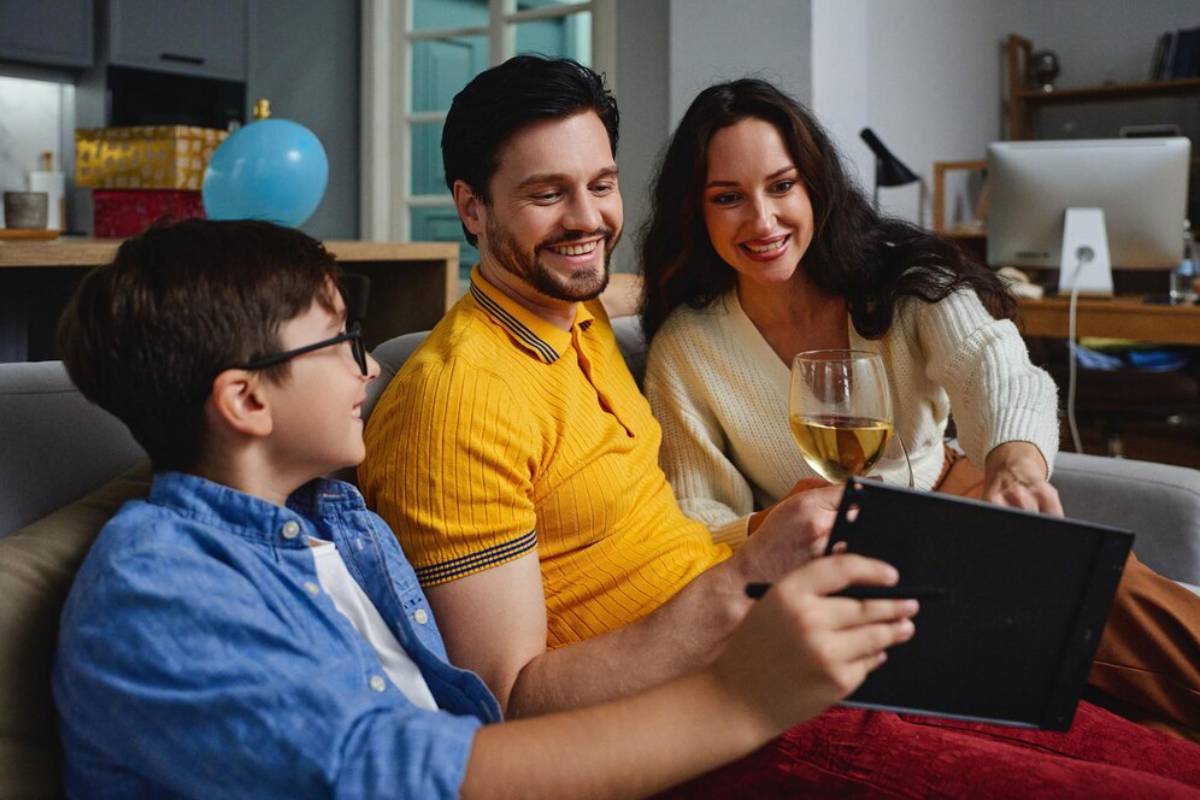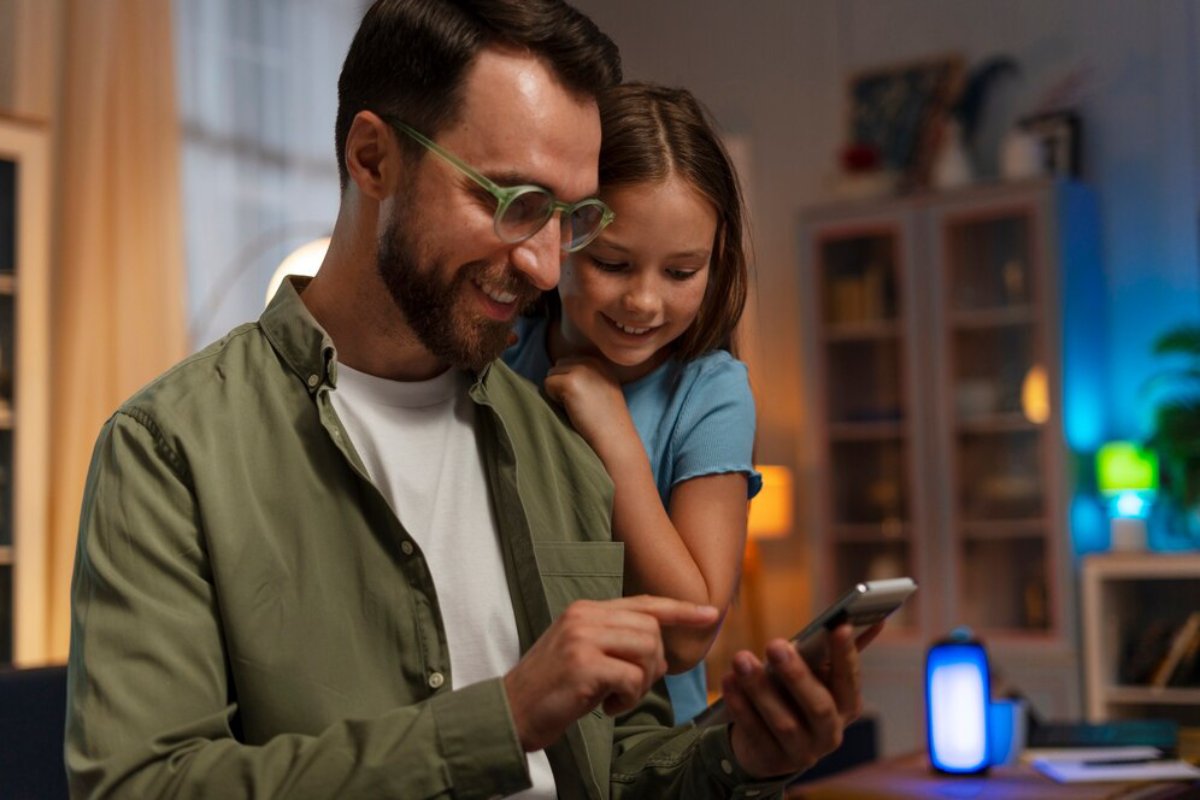
Co-Watching Tips for Media Conversations
Today, the digital world is changing fast, and because of this, how we consume media has changed a lot. Families no longer gather around one TV to enjoy a favourite show or movie together. Streaming platforms, on-demand content, and smart devices make co-watching easier and more varied. Technology helps us stay connected. You can stream a new series with friends worldwide or watch a movie with family in different rooms. We can share the media experience no matter where we are.
Co-watching isn’t just pressing play together. It’s also about having deep talks that make our viewing better. Media conversations, called “digital dialogue,” help us enjoy and understand the content we consume better. This guide offers co-watching tips to enhance your viewing experience. It aims to turn watching into a fun and meaningful exchange of ideas.
Key Benefits
Enhancing Engagement Through Media Conversation Starters
Co-watching helps spark fun and engaging conversations. Co-watching lets you talk about what you’re watching as it happens. But how do you spark these conversations?
Media conversation starters help keep the chat going. Instead of just talking about whether you like the show, try asking more profound questions. Focus on the characters, the plot, and the themes. This can spark more thoughtful discussions. Rather than just calling a scene funny, ask: “What do you think made the character do that?” or “How do you think the story will go from here?”
These questions encourage viewers to dig deeper and interact with the media more meaningfully. This engagement helps people appreciate storytelling techniques, character growth, and key themes. These elements might be overlooked without it. These discussions help viewers move past passive watching. They encourage critical thinking and help make connections. This deepens understanding of the content.

Building Stronger Connections
Co-watching is more than just watching content. It’s a great chance to build relationships. When you watch something with someone, you’re doing more than just viewing. You’re building a shared experience together. Talking about what you’ve watched can help you bond with family, friends, or colleagues. It strengthens your relationships.
When you watch something together and talk afterwards, you do more than comment on the plot. You share insights about your views, values, and worldviews, too. Media reflect human experiences. Discussing a show or film can spark wider talks about life, society, culture, and personal values.
A film about family dynamics can lead to talks about your family, values, and how you were raised. A documentary about climate change could prompt conversations about environmental responsibility and action. These discussions strengthen the bond between co-watchers. They often spark conversations that might not happen otherwise. Over time, these moments help nurture stronger connections beyond entertainment.
Expanding Perspectives
Co-watching is exciting. It can also change how you see the world. Talking about media with others exposes you to new ideas. These ideas can challenge what you already think. You might have found a scene funny, but someone else could see it as offensive. Discussing these viewpoints can lead to engaging talks about culture, sensitivities, and biases.
This diversity of thought can lead to profound personal growth. A documentary on a social issue can inspire someone to share their personal experiences, which helps them understand the topic better. A diverse group of co-watchers leads to richer conversations, unifying different viewpoints, backgrounds, and experiences.
Exploring various media genres, cultures, and viewpoints helps you stay open-minded about media. New content types, like foreign films, historical documentaries, and psychological thrillers, give us fresh world views.
Additional Expert Tips & Common Mistakes to Avoid

Best Practices for Effective Co-Watching
To get the most out of your co-watching sessions, it’s helpful to implement a few best practices. Setting a specific time to watch together helps everyone stay aligned. This is important in a group where schedules may not match perfectly. For example, you can set a weekly time to stream a show. Or, schedule a virtual movie night. This way, co-watching becomes a regular part of your routine.
Also, picking what to watch ahead of time can save time and prevent fights during the show. Consider creating a list of movies or shows everyone is excited to watch together. This way, you won’t end up wasting time trying to decide on something in the moment.
To make co-watching even more fun, use your technology. Platforms like Netflix, Disney+, and Amazon Prime have group watch features. These let users sync playback and chat in real time. This feature is perfect for virtual co-watching with friends and family who live far away. You can enjoy the same content anywhere in the world, making conversations flow more naturally.
Common Mistakes and How to Avoid Them
Co-watching can be fun and meaningful. However, co-watchers often make some common mistakes. One major mistake is monopolising the conversation. It’s good to have an opinion, but everyone deserves a chance to share their thoughts. To avoid this, encourage quieter participants to express their views. Try asking clear questions, like “What do you think of this character’s choices?” or “How would you have handled that situation?” to help invite others into the conversation.
Another common mistake is allowing the conversation to overshadow the media itself. It’s easy to get caught up in a debate or discussion and miss key moments in the content. To avoid this, take a break during intense talks and save deeper analysis for after the viewing ends. This way, you won’t miss critical plot points and can discuss them at length without distractions.
Advanced Insights
The Role of Digital Dialogue in Media Literacy
Digital dialogue significantly affects how we consume media. It does more than just make the experience fun. Talking about the media we watch helps improve our media literacy. Media literacy means accessing, analysing, evaluating, and creating different types of media. It is a vital skill in our media-filled world today.
Engaging discussions help viewers notice the subtle messages in media. This awareness allows them to analyse what they watch more critically. For example, when watching a commercial, viewers might think, “Who is this ad for?” or “What stereotypes does it promote?” These talks push viewers to dig deeper. They help us think about the impact of what we watch.
Digital dialogue builds an audience that questions biases, stereotypes, and media assumptions. Watching shows with gender stereotypes or biased news can change how we think. Discussing these media together helps us think critically and become more informed.
Incorporating Diverse Media for Richer Conversations
Broadening your media choices helps you enjoy more prosperous and more diverse talks while co-watching. Try watching different genres or types of media. Step out of your comfort zone and add new content to your co-watching list. This can include films from various countries, genres you may not know well, or works from creators outside the mainstream.
Watching a foreign film with subtitles can start talks about culture, film styles, and emotions. A documentary on a significant global issue can start meaningful conversations. It helps us think about current events and our responsibilities.
The key is to embrace diversity in the media you consume and the people you watch it with. When people from different backgrounds and cultures meet to discuss media, it broadens their views and enriches conversations.
Conclusion: Co-Watching Tips for Media Conversations
In conclusion, co-watching is more than just watching together. It lets you explore content, learn from others, and improve your media skills. Co-watching boosts engagement with media. You can use conversation starters, enjoy digital chats, or mix in different media. This makes the experience more meaningful.
Next time you watch your favourite show, talk thoughtfully with your fellow viewers. See it as a chance to learn, question your beliefs, and build closer ties with others.
I urge you to explore new media with friends and family. Use co-watching to deepen your understanding of the content and the people you share it with. What new media will you co-watch next, and what conversations will it spark? Don’t be afraid to challenge your perspectives and dive deeper into the digital dialogue.


